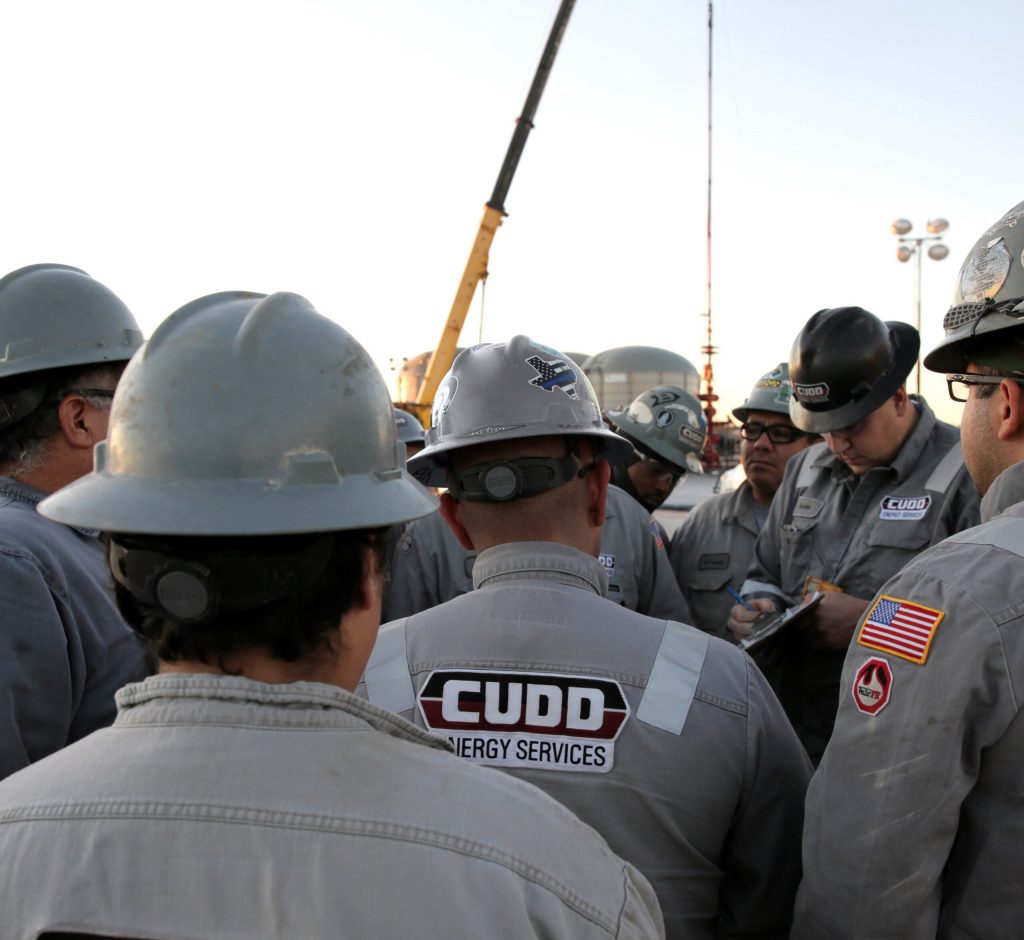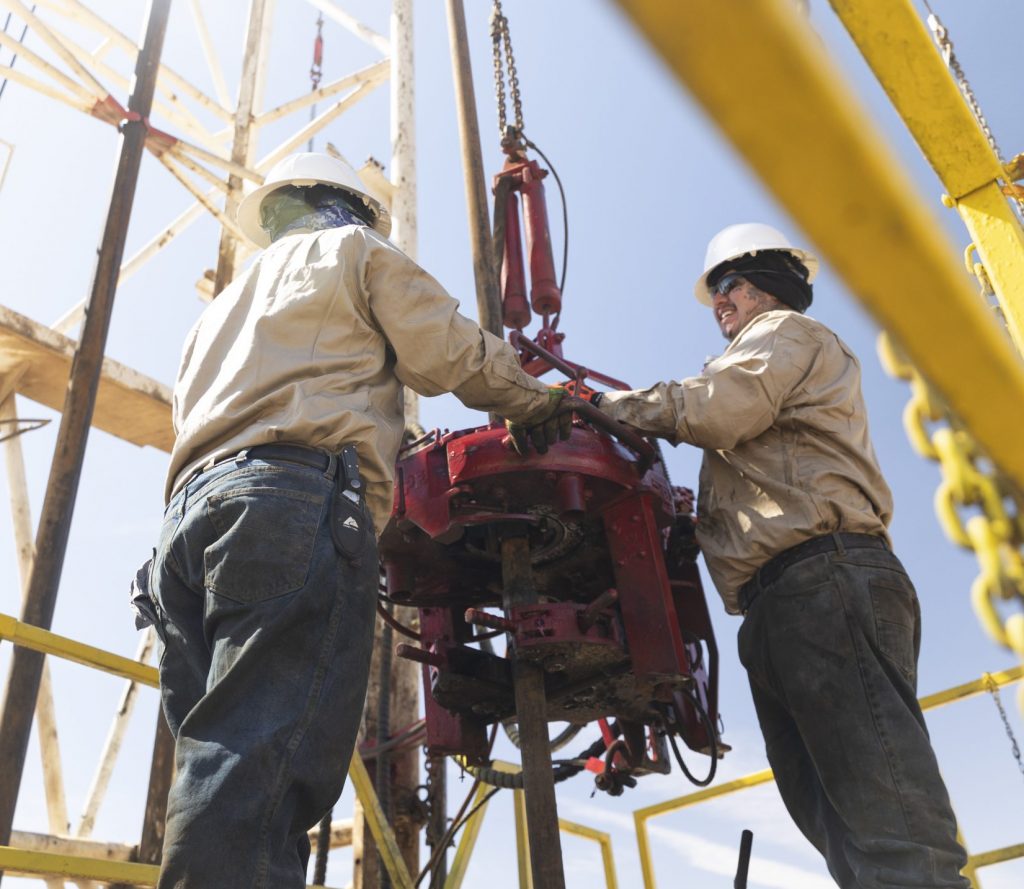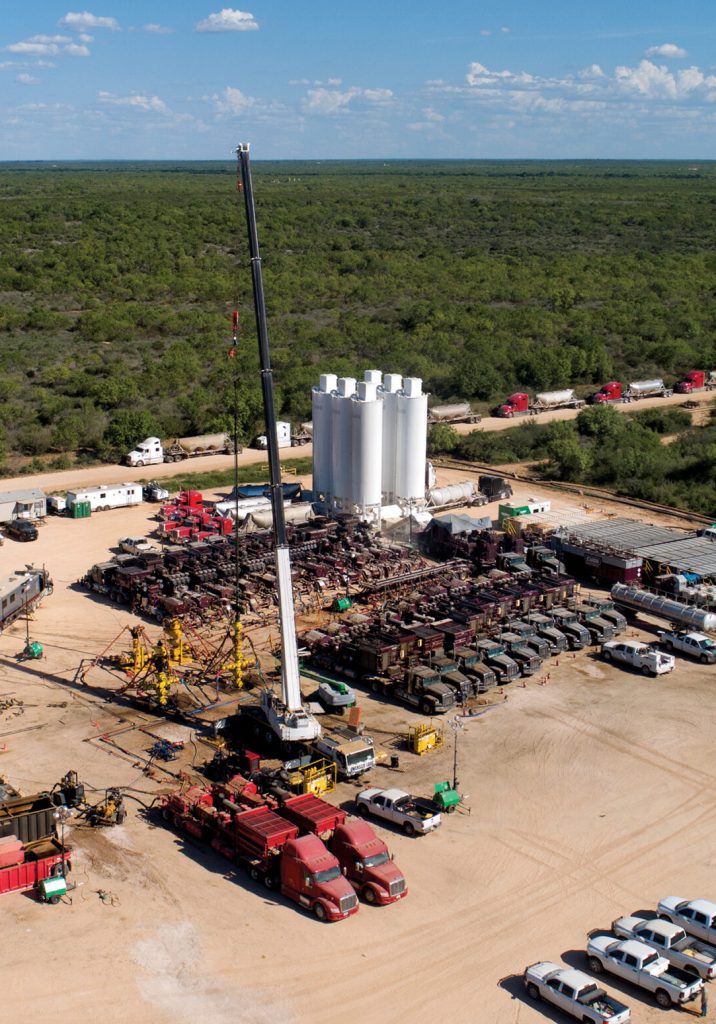
With personnel strategically located throughout the major basins, Cudd maintains a customer-centered operational focus.
Whatever the powerful machines, the deep holes, or the unfathomably complex technology, the oil patch revolves around its people. For Cudd Energy Services, that means giving their people the tools and training to be efficient, accurate, and safe. For JMR Services, it means helping producers efficiently and safely plug abandoned wells to protect the air, the water table, and the future.
Developing Technology and People
With multipad drilling, simulfracs (which turn a 24-hour day into a 48-hour day), longer laterals, and much more demand for speed and accuracy, the oil patch is demanding more and more from its people and its technology, said Rocky Shields, Director of Operations for Cudd Energy Services. “We’re putting a tremendous amount of work on our folks, pretty much every day.”
Among Cudd’s services are acidizing, hydraulic fracturing, water management, and cementing.
In previous years there might be down time on a shift, he said, but now, “The goal is to be productive the entire time.” Training is important, he said, and that training never stops as technology continues to be updated and advanced on a regular basis.
Tools, and information about the performance of those tools, are key ingredients, “so they can do the things necessary to keep power-up time at the highest possible levels.”
Cudd has worked with Caterpillar’s oil and gas division to keep the most current equipment as part of the mix. “We’ve worked with Caterpillar for quite a few years now to continue to expand our portfolio of equipment that is highly capable. We continue to benefit from advancements they are making.”
Specifically, Cudd is using the Cat TH55 transmission, paired with Cat 3512 DGB engines. Shields explained, “The TH55 transmissions have proved themselves in many operations outside of hydraulic fracturing. It is a very reliable transmission, able to input and output a lot of horsepower. Maintenance cycles are clean, and we’re able to get that done on a nice cadence.”
In its frac fleet, for example, Cudd’s current makeup is the Cat 3512E DGB, which is a dual-fuel gas-blending engine designed to reduce GHG emissions from diesel. “We deployed our first DGB fleet in 2021 and have since added to our count of Tier IV DGB engines and we have had remarkable success displacing the use of diesel with clean burning natural gas.”

JMR got its start seven years ago, adopting a plan to be a turnkey well and facility retirement firm, requiring no other service companies in the process.
Highly sophisticated and “super efficient at burning natural gas” is how Shields describes the 3512E DGB engines. The engine itself is efficient, and it’s further enhanced by extensive data and analytics. Caterpillar itself has digitized a large amount of data gathering for the back office, and Shields says Cudd is working to make it accessible onsite. That way people on the ground “can react and quickly address issues, whether it’s something as simple as fuel filters or gas supply pressure coming into the units.” Resolving a small problem quickly could prevent a larger one later.
M&A Impacts
Shields said merger and acquisition activity has impacted the company in subtle ways. “If it’s not a direct impact, say we lose a customer because of a merger or acquisition, the impact can be, are there fewer companies but more work? I think that’s all going to shake out.”
He continued, “I think generally, there’s more work for each—they’re all getting more efficient with what they’re doing, and generally it’s creating additional competition among oilfield service companies.”
Efficiencies are helping, as Shields noted previously. “We are doing a lot more with a lot less. And I think that’s the beauty of the oil and gas business—our continuous improvement year over year, cycle after cycle. It’s really impressive.”
Change Management
As the industry has historically been resistant to change, some of that resistance itself is changing, Shields observed, as long as the change is positive. “Change for change’s sake, I do not think is a good thing,” he said. But in many cases, “There is so much benefit in much of the change that’s happening today. We talk about increasing uptime, operational efficiency.”
The latter is the key to adopting change. Shields noted that any time Cudd crew is onsite, “there are economics behind all of it. I think a lot of these changes do have significant economic benefits, and those are the easiest to adopt. I think the adoption rate [of new technology] is changing because there are so many benefits to making the change.”
ESG Is Part of the Change
Here again, there is economic benefit, particularly in capturing methane for sale into the pipeline system rather than letting it escape. But there are social benefits as well. Shields quoted a Cudd customer as saying, “We need to maintain our social license to operate.” Shields commented, “That was a profound statement, and it’s very true.” Maintaining a positive environmental image among industry outsiders is “critically important.”
Plugging Away: Abandoned Wells
As environmental concerns rise, addressing abandoned wells that leak methane, produced water, and other unsafe substances has become more of an issue. For JMR Services founder and CEO James (Jimmy) Roark, this is a significant situation. Part of the problem is the age of many of the wells in question.
“The biggest issue that we are encountering with leaking wells is that most were plugged decades ago using unsophisticated plugging designs,” he said in an email interview. “These wells will have to be re-plugged using current standards that were designed for true end-of-life abandonment. We are seeing a dedicated focus on plugging end of life wells from all customers regardless of their size, which is being driven not only by heightened regulatory statues but also from the realization of the long-term liabilities that are incurred for not performing it at the right time.”
Among the pushbacks on well plugging is the cost. Many have estimated that the Permian Basin alone has about 7,000 abandoned wells, with total plugging costs running into the hundreds of millions. In 2022 the Department of the Interior offered Texas $318.7 million for plugging procedures, but Texas Railroad Commission members, including Chairman Christi Craddick, had concerns about the extra red tape that would be associated with such money.
When asked if any new technologies were in the offing to reduce costs, Roark said there is “nothing to date that has a significant financial impact on the cost.” Some improvements are coming from basic efficiencies of scale, he noted.
Regulators
Regulatory agencies such as the EPA are tightening up on rules because, said Roark, they “realize that ordinary taxpayers could be on the hook for billions of dollars if it is not taken care of at the end of production.”
The need for plugging could explode, Roark mused, because new Quad O regulations could make thousands of marginal wells no longer economically viable “and they will have to be safely plugged and managed as a result.”
Company Growth
JMR as a company started seven years ago with a plan, which was to be a turnkey well and facility retirement firm, requiring no other service companies in the process. Roark says the marketplace responded well to this business model, “which has allowed us to grow into the largest provider in North America. We’ve continued to grow and acquire new facilities, tools, and software to evolve with the changing times.”
Roark attributes part of that growth to the fact that Permian operators “have diligently taken to the task of addressing these concerns,” getting their abandoned wells plugged safely.
Overall, energy is about people—the people who benefit from it, and the people who help find it and deliver it to those who benefit from it. These two companies are among the many that are deeply keyed into the humanity of the industry.
Paul Wiseman is a longtime freelance writer in the energy industry.











